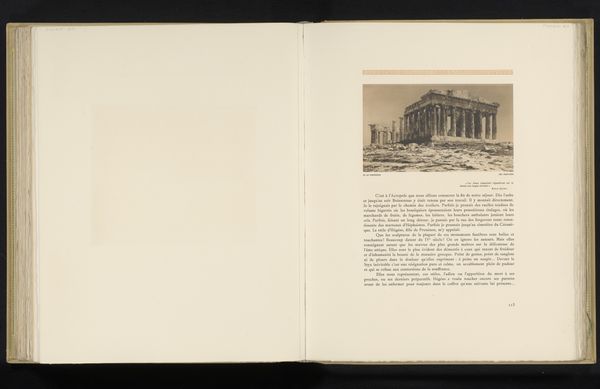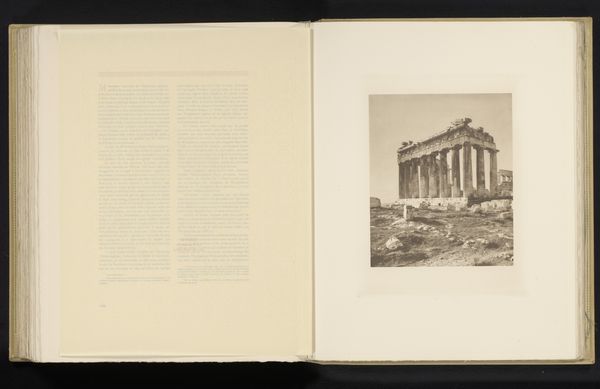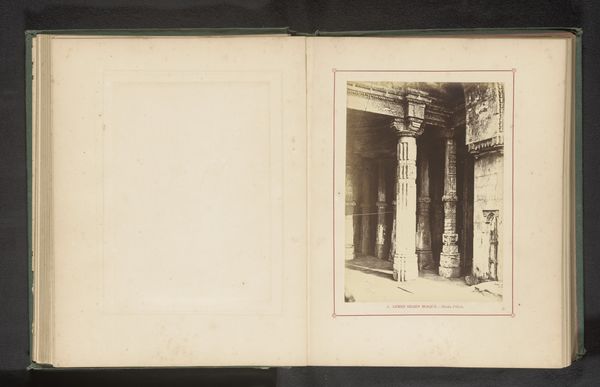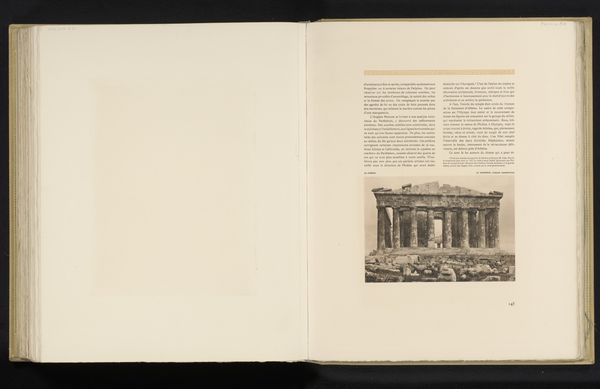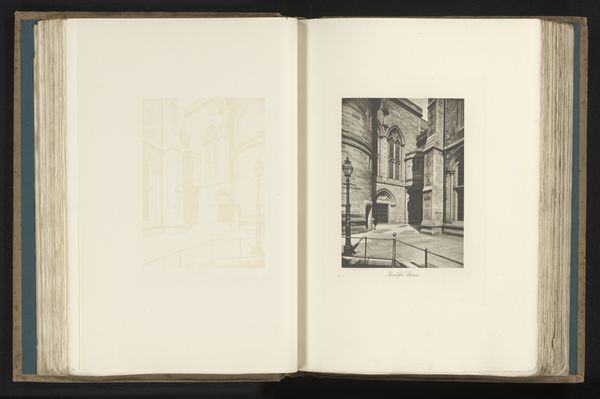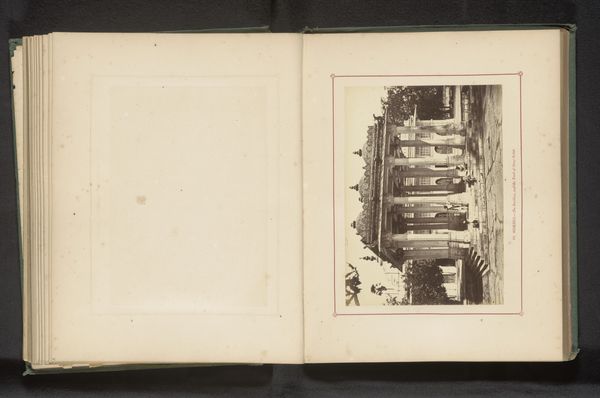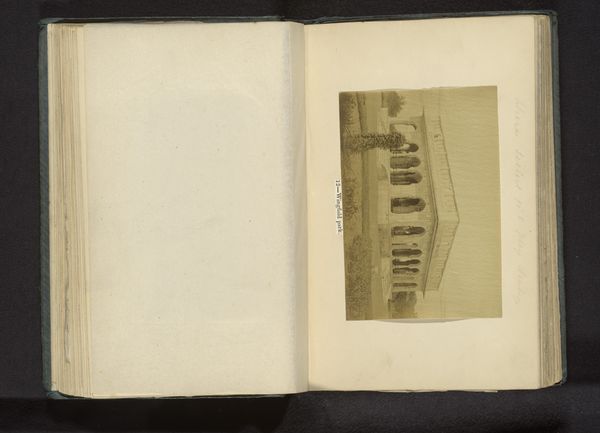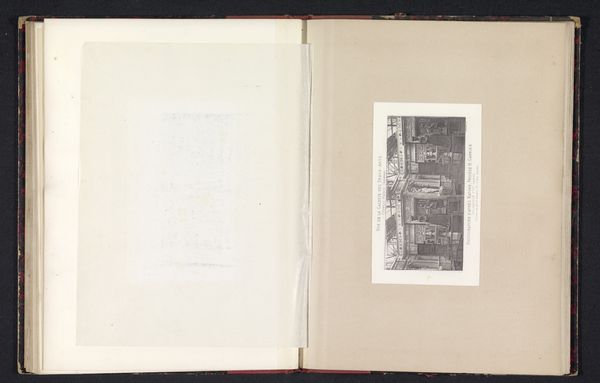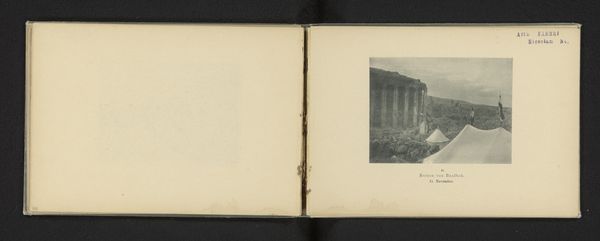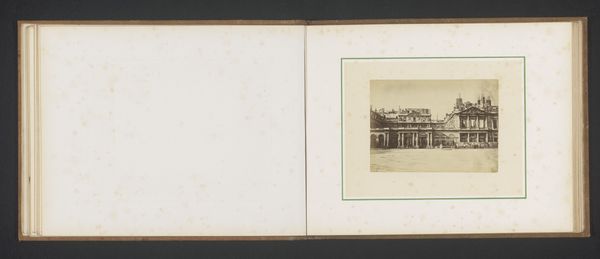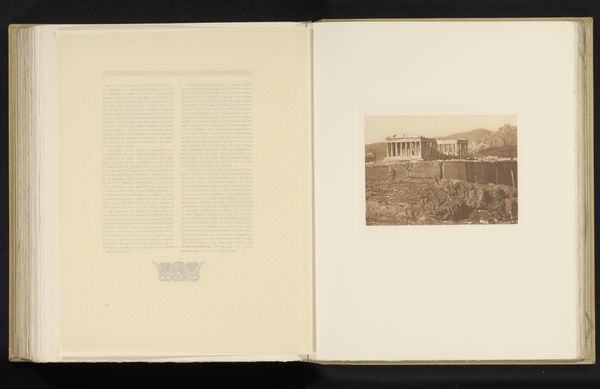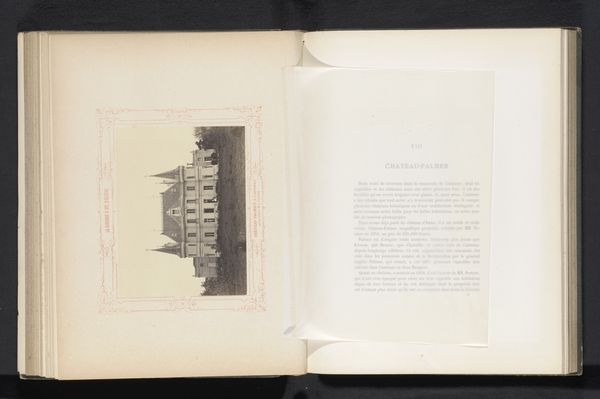
print, photography, albumen-print
#
neoclassicism
# print
#
photography
#
cityscape
#
albumen-print
#
building
Dimensions: height 392 mm, width 295 mm
Copyright: Rijks Museum: Open Domain
Editor: This photograph album features the exterior and interior of the former Hunterian Museum, dating to before 1891. I’m immediately struck by the neoclassical architecture. What can you tell me about its place in art history and how this museum would have shaped its visitor's understanding of the world? Curator: Well, this image speaks to the 19th-century’s fascination with Neoclassicism and the importance placed on museums as institutions of public education and civic virtue. Notice the imposing columns, the symmetrical design, the sense of order – all deliberate choices meant to evoke the grandeur of ancient Greece and Rome. Museums like the Hunterian were consciously designed to impress, not just with the objects within but with the architecture itself. It’s performing a very public role, visually embodying ideals of reason and progress. Editor: So, the building isn't just a container for art; it’s actually part of the message itself. Curator: Precisely! And who do you think these museums catered to? Who had access, both physically and intellectually, to these spaces and the knowledge they contained? Editor: I guess it was primarily aimed towards educated elites, rather than the general public. Curator: Exactly. The photograph and indeed the building itself become historical documents revealing the power dynamics embedded within cultural institutions of the time. Its role then was deeply entangled in social hierarchies. Reflecting on that now allows us to understand the shifts in museum culture and accessibility, how the politics of display have transformed. Editor: That's such an interesting way to look at it. I never considered the building itself to be making an argument about society! Curator: And those arguments are constantly evolving. That's the beauty of viewing art through a historical lens – it's a conversation that never truly ends.
Comments
No comments
Be the first to comment and join the conversation on the ultimate creative platform.
